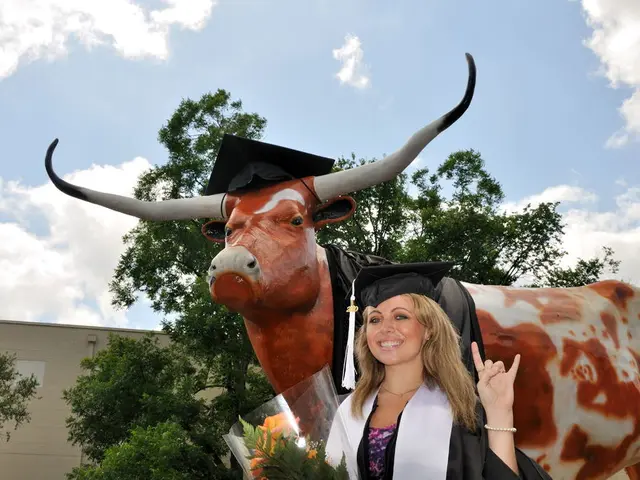Trump Proposes New K-12 Education Policy to Incorporate Artificial Intelligence
The New AI Push in U.S. Education: A Game Changer or a Recipe for Disaster?
The educational landscape in the United States is about to witness a major shift, thanks to a draft executive order that aims to propel artificial intelligence (AI) into classrooms. Titled "Advancing AI Education for American Youth," this order is intended to give the U.S. a competitive edge in the global AI race, particularly against powerhouses like China.
This order, if ratified, would set up a White House task force on AI education, inviting tech titans like Michael Kratsios and David Sacks to join the effort. The objective is to make AI literacy a priority, with the federal government, industry, academia, and nonprofits collaborating to teach AI essentials and critical thinking skills to students.
However, the road to AI integration in classrooms is fraught with challenges. A study conducted by Microsoft and Carnegie Mellon University shed light on a worrying trend: those who blindly trust AI assistants exhibit reduced critical thinking. This raises concerns about the potential pitfalls of over-reliance on AI tools, which could lead to the erosion of critical thinking skills.
In light of this, it's essential that educators are trained to use AI effectively, integrating it into various subjects while promoting sound critical thinking. Additionally, the disparities in access to technology and literacy need to be addressed, particularly in low-income schools where resources are scarce.
The execution of this executive order could be a double-edged sword. If implemented correctly, AI can serve as a powerful tool for students, offering faster data processing speeds and offering aid in administrative tasks. But the fear is that an over-focus on technology could result in overshadowing traditional teaching methods, causing a disconnect between what students need and what technology offers.
Indeed, the irony of promoting critical thinking within an AI context is not lost on many. Education Secretary Linda McMahon's recent, amusing blunder of confusing artificial intelligence with "A1" steak sauce, serves as a stark reminder that ignoring the complexity of technology can lead to unexpected consequences.
Balancing the role of AI in education while safeguarding critical thinking will be a tough challenge, but one that is vital to ensure the development of informed, thoughtful future leaders. The question remains: can the U.S. education system rise to the occasion and navigate this tech-driven evolution with finesse? Time will only tell.
- Gizmodo reported on the draft executive order aiming to incorporate artificial-intelligence (AI) into U.S. education, raising questions about its potential impact.
- The order, named "Advancing AI Education for American Youth," proposes establishing a White House task force on AI education, inviting tech figures like Michael Kratsios and David Sacks to collaborate.
- The goal is to make AI literacy a priority, emphasizing the importance of critical thinking skills in AI education and collaboration between the federal government, industry, academia, and nonprofits.
- However, a study by Microsoft and Carnegie Mellon University revealed that excessive trust in AI assistants may erode critical thinking skills among students, leading to concerns about AI integration in classrooms.
- As AI becomes more prevalent in education, policy-and-legislation and politics must consider education-and-self-development, ensuring that AI tools support, not supplant, general-news learning and traditional teaching methods.
- Online-education, particularly in low-income schools where resources are scarce, needs to address the accessibility of tech- devices and literacy to ensure fair opportunities for all students in this tech-driven educational evolution.







